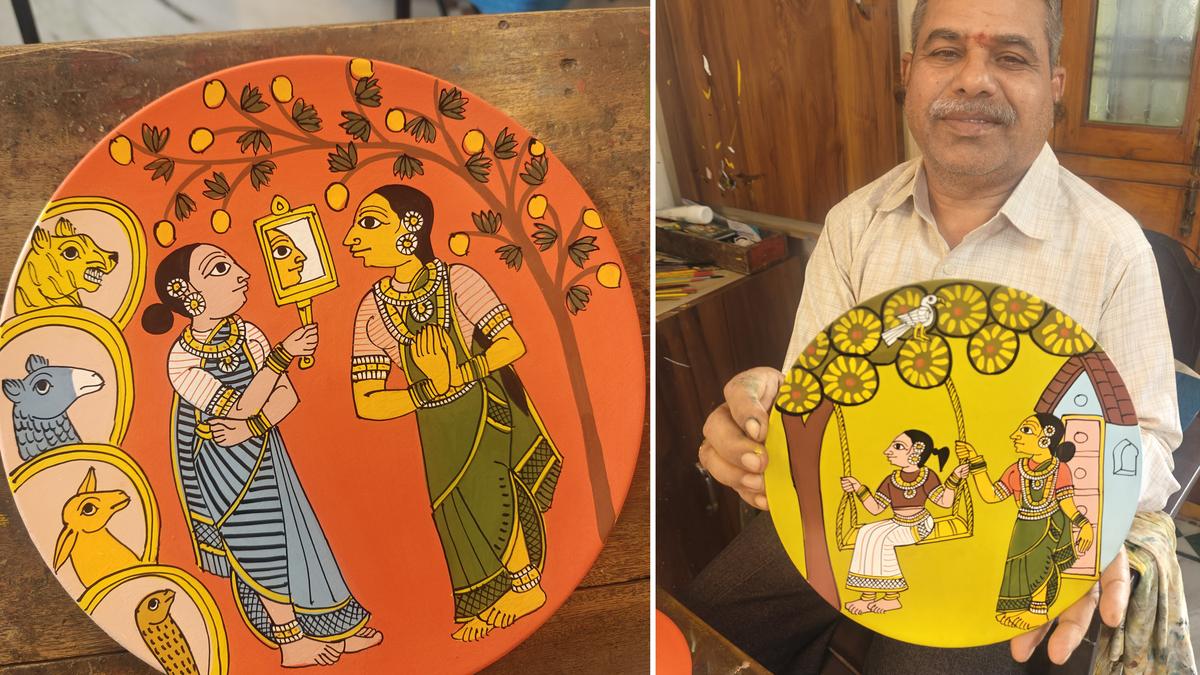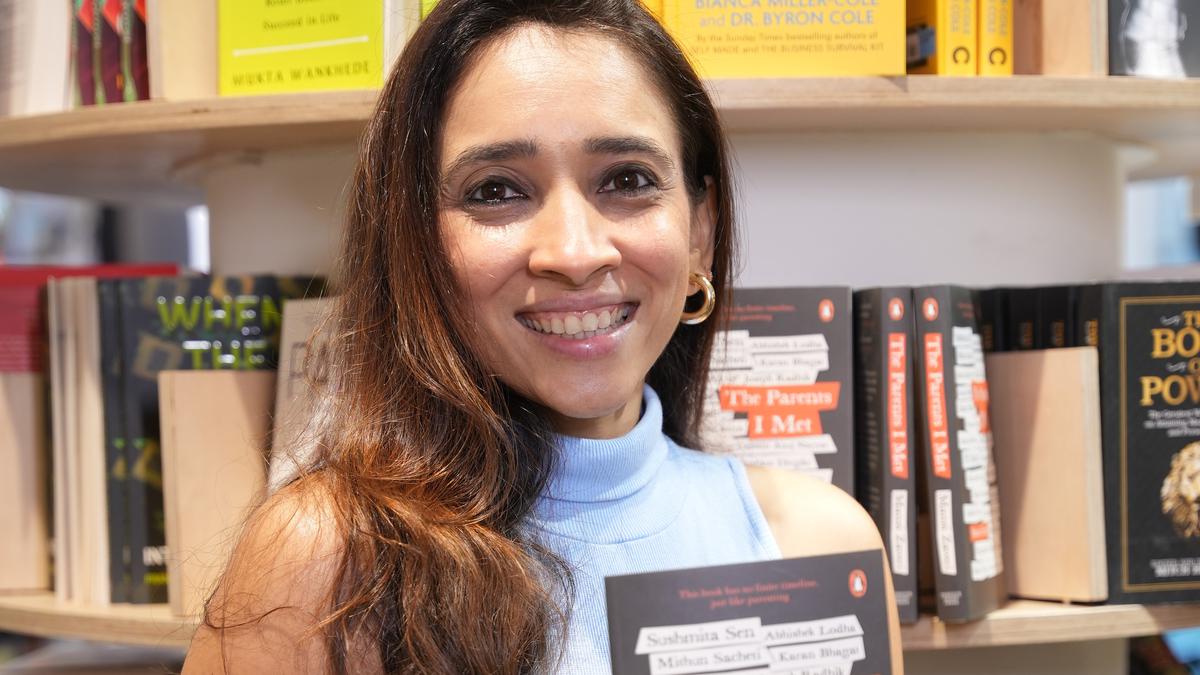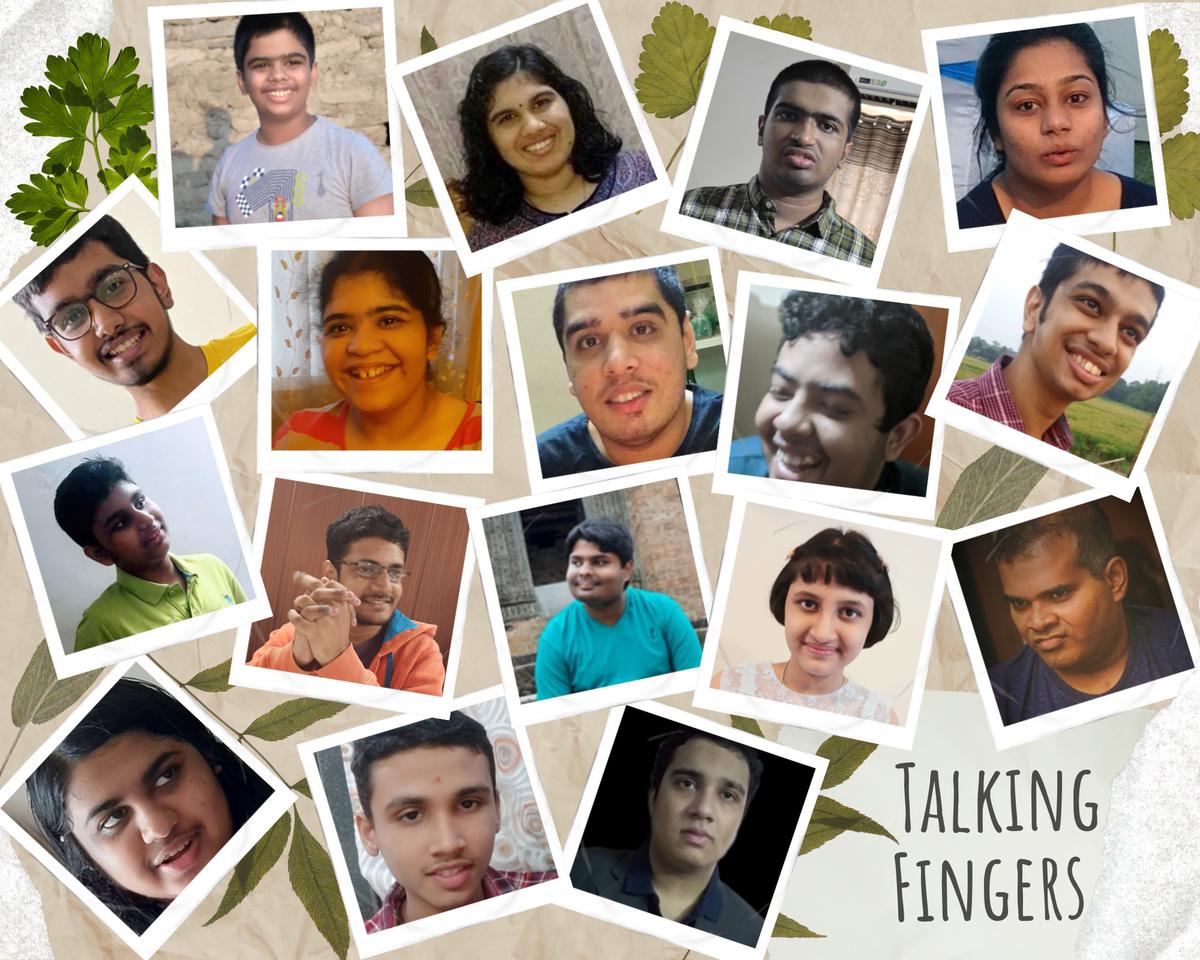Vaikuntam and his art
| Photo Credit: Special Arrangement
How does an artist celebrate the golden jubilee of his life in the chosen field of art? By adapting to narrate diverse stories through traditional art, is the response from Cheriyal artist Dhanalakota Vaikuntam Nakash. Vaikuntam’s home in Hyderabad echoes tales of the past with a contemporary flair. The living room is akin to a mini gallery as Vaikuntam, his wife Vanaja and sons Rakesh and Vinay intricately add colours on wooden plates, in preparation for the upcoming December gifting season. “My daughter Sarika and daughter-in-law Niharika also do Cheriyal art. Even my granddaughter Tananya and grandson Vedansh play with colours,” says the 64-year-old artist, with pride.
Changing mediums
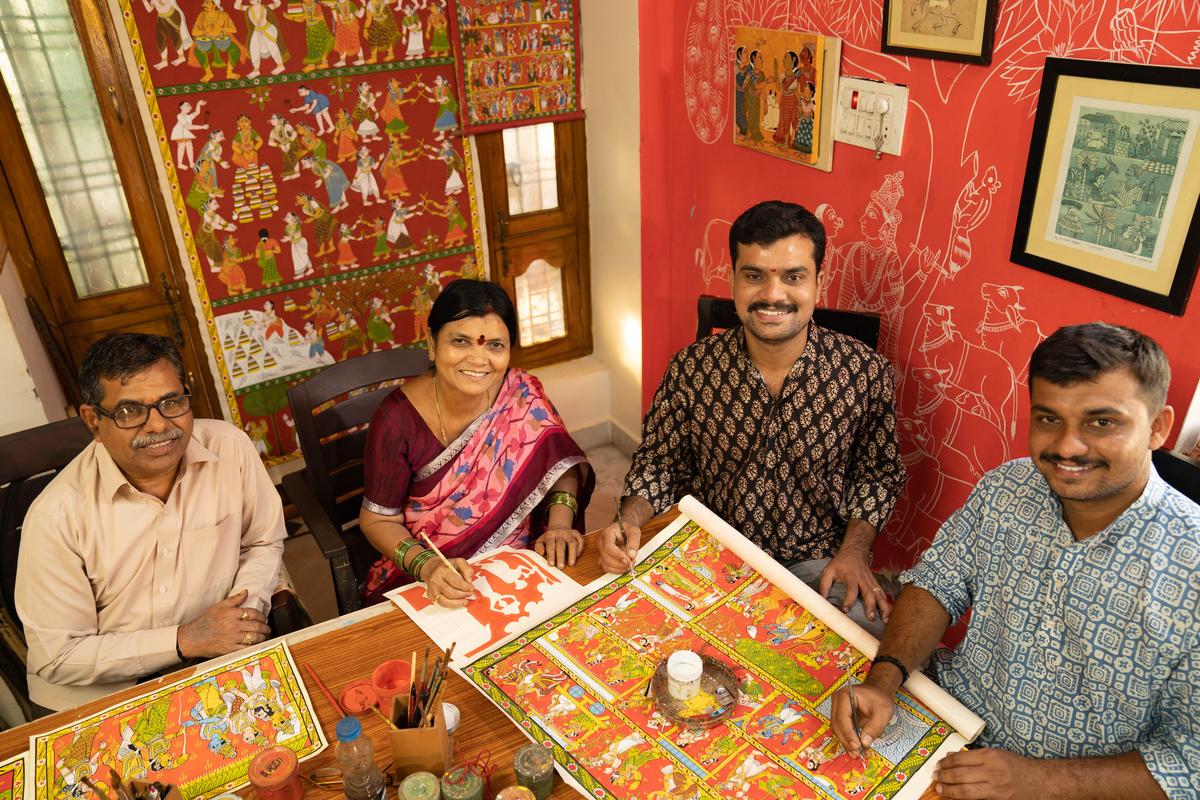
Vaikuntam (left) with his family who also do Cheriyal art; wife Vanaja and sons Rakesh and Vinay
| Photo Credit:
Special Arrangement

Vaikuntam belongs to one of the few surviving families — the Dhanalakotas — still practising the 400-year-old art Nakashi art form. Infused with vibrant local motifs, Cheriyal art captivates with its storytelling narrative. The figures in profile seem to be in animated conversation, all decked in colourful attire and captivating ornaments, reflecting the Telangana culture. Whether painting on scrolls, narrating the Puranas and incorporating folk art on khadi cloth or in new mediums like ceramic and wooden plates for home decor, Vaikuntam celebrates Nakashi art by adapting to new avenues of expression.
Art since a teenager
Dhanalakota Vaikuntam doing Cheriyal art
| Photo Credit:
Special Arrangement
In 1942, Vaikuntam’s father Venkata Ramaiah, a native of Thippapuram in Karimnagar district, Telangana, had come to live with his sister in Cheriyal village (the art form derives its name from here). Vaikuntam studied there till Class VII, discontinued studies and became more inclined towards learning art. “My father used to paint puranas on scrolls which were used by itinerant storytellers who travelled across villages .” he recalls. Gradually, as artisans gave up the art form due to depleting patronage, his father remained the only person Cheriyal village to continue the tradition of doing the art.
When Venkata Ramaiah suffered paralysis in ’74 and was left with incomplete commission works, he taught the intricate art to both his sons Chandraiah and Vaikuntam; the latter did his first painting on a 4×30 feet scroll depicting the Gurram Mallaiah puranam.
“On the suggestion of All India Handicrafts board designer Sundarmurthy, our canvases were changed from big scrolls to khadi cloth. He had advised us that small canvases depicting themes like Ramula kalyanam, Sita swayamvaram and important events from the Mahabharata are ideal for homes; and will have good sales in the art market,” recalls Vaikuntam.
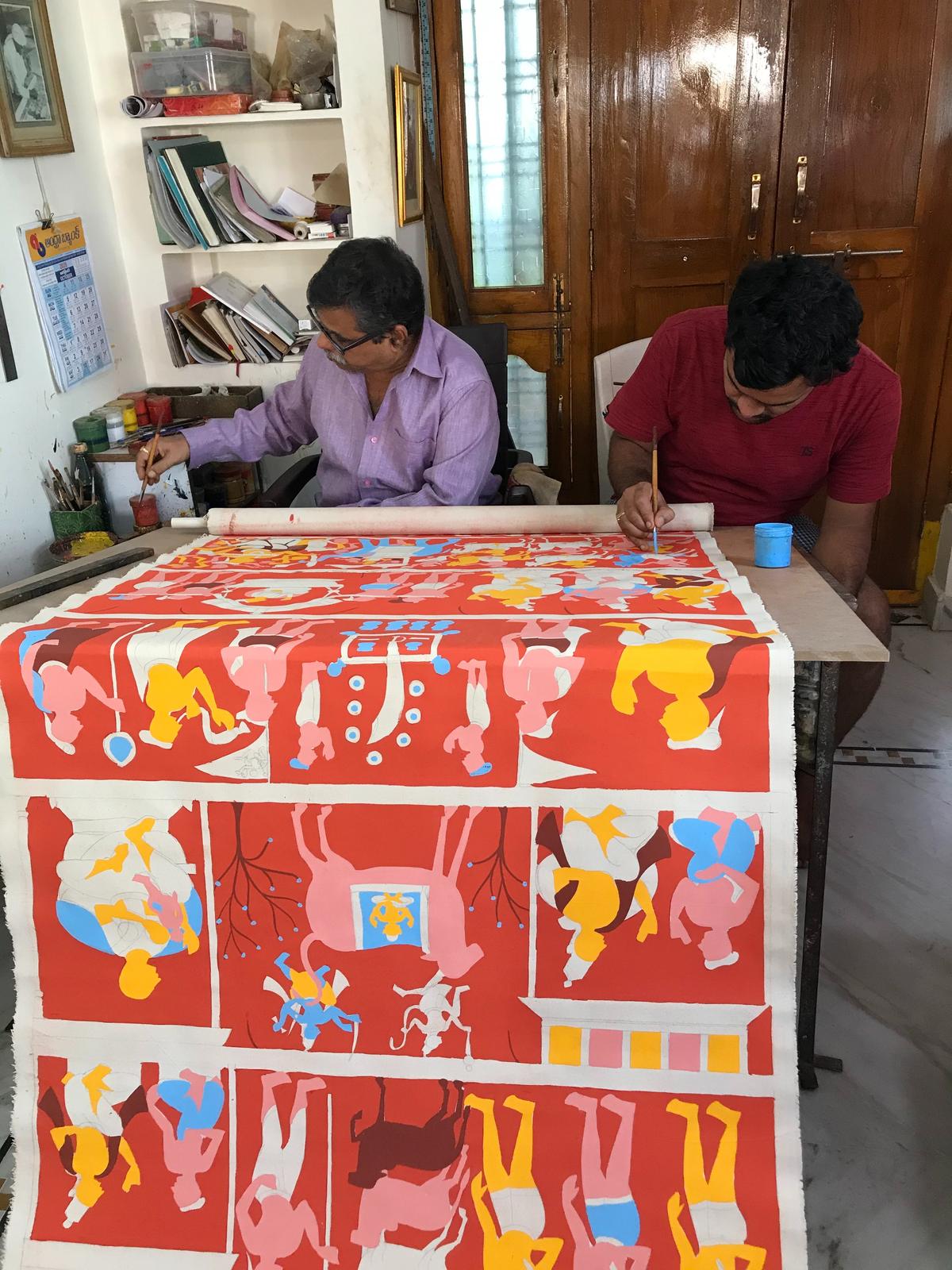
Legacy continues…Vaikuntam with his son Rakesh
| Photo Credit:
Special Arrangement
While handicraft stores like Lepakshi bought these works, Vaikuntam engaged in creative processes through workshops, exhibitions and art demonstrations across India. In crafting these connections, new themes got added to the repertoire of stories; stories from mythology/puranas were supplemented with local, rural subjects in 2010, as Cheiryal art souvenirs gained prominence. “People became nostalgic when they saw paintings that captured intricate details of a village life. Depicting a rural landscape in vibrant colours and the stages involved in crop production and farmer’s efforts — polam natleyadam (sowing the crop), vadlu danchadam (threshing paddy), biyyam visaradam (winnowing rice), all created a deja vu feeling,” he shares.
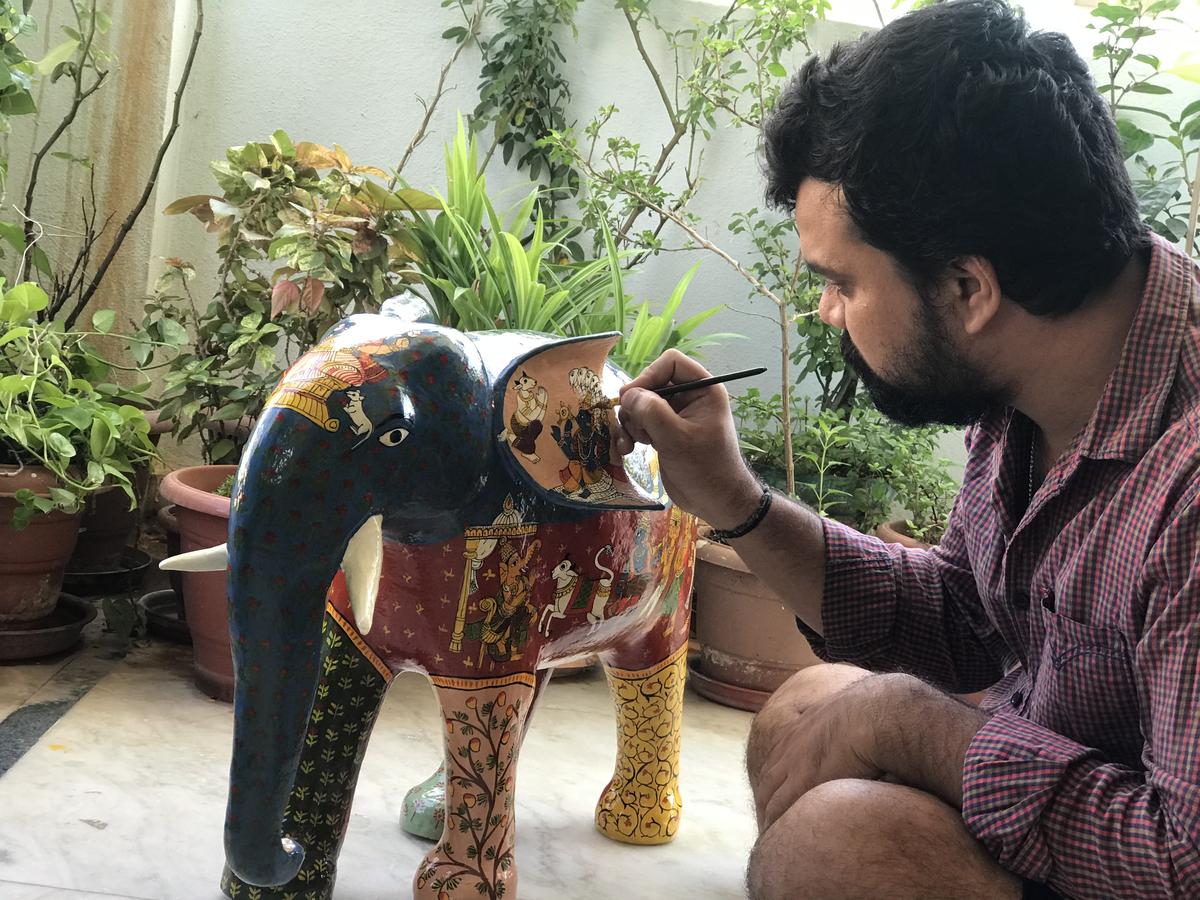
Rakesh painting a wooden elephant
| Photo Credit:
Special Arrangement

Balancing traditional and contemporary stories, Vaikuntam painted the Markendeya puranam on a wooden tiger (2015) and Gajendra Moksham on a canvas cloth in 2023. When interest in traditional symbolic souvenirs shifted to functional art focussing on sustainability and craftsmanship, he took to painted on cardboard, ceramic and wooden plates. He then shifted to painting on T-shirts, fridge magnets and masks.. all these not only helped them make a livelihood but also made the art form relevant.
Creative process
Vinay follows his father’s footsteps
| Photo Credit:
Special Arrangement
“The canvas might change but the creative process and use of natural colours is the same,” he says and explains the process: A thick mixture of chinta ginjala ambali (tamarind seeds paste), ganji (starch from the boiled rice), gondu (tree gum), sudda matti (white powder) is applied twice with a small cloth on the khadi fabric and left to dry. Once the outline is demarcated and the background painted, the artist paints figures in natural colours. “We grind the vegetable colours on a stone for at least three hours and filter it, which helps in removing the dirt and give colours a good shine.”
Happy with honour
Recently Prime Minister Narendra Modi hailed Vaikuntam’s efforts in propagating the traditional art in his Mann Ki Baat show. Calling it a big honour, Vaikuntam says, I have been doing this art for 50 years now. I am happy Prime Minister garu has recognised my efforts.”
Apart from holding exhibitions and conducting craft workshops across India, Vaikuntam— who shifted to Hyderabad from Cheriyal 10 years ago — conducts workshops for enthusiasts at his home in Boduppal and for students at schools and colleges. As his journey with Cheiryal art continues, he hopes to keep exploring different aspects of the the art along with his sons.
Published – November 11, 2024 02:30 pm IST


